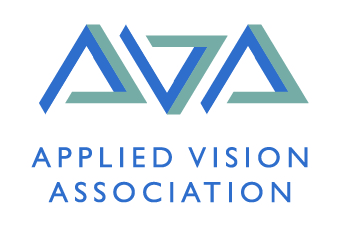

The Geoffrey J Burton memorial lecture is given at the AVA Annual meeting. The individual giving the lecture is someone in the view of the AVA committee who has made a significant contribution to vision science.
Lectures have been given by:
Information about Geoffrey Burton
Geoffrey Burton was a research student at Imperial College in the early 70’s, worked with the late Keith Ruddock, and then worked at the defence establishment RARDE in Kent until his early death in 1986. He was well known to some members of the AVA, particularly David Foster and Ian Moorhead.
David Foster writes: “Geoff’s position was unique in the evolution of the AVA. Until his untimely death in 1986, at the age of 36, he was an influential and enthusiastic supporter of the AVA and an active Committee member, particularly during the early years of the AVA’s development. He inspired and helped sponsor many young vision researchers through his position at the then MoD. On a wider front, he made important and lasting research contributions to vision science.”
Geoffrey Burton’s research 1970-1986
Geoffrey Burton’s work covered a wide range of topics in optics and vision, much of it original and innovative work, and some of it way ahead of its time:
An example of this is his 1973 paper that studied nonlinearity in the luminance response of the retina. He used a pair of lasers to create two sinusoidal gratings directly on the retina, by-passing the optics, as had been done earlier by Campbell & Green in Cambridge. Pre-figuring the interest in 2nd order vision by at least 15 years, Burton showed that nonlinearity could create distortion products or ‘beats’ even from very high spatial frequency gratings that were present on the retina but too fine to be visible. He showed that the source of the beats preceded the site of contrast adaptation, and from several other arguments concluded that the nonlinearity must be very early in the visual system, probably early in the retina. This fits exactly with work in the late 1990s by He & MacLeod who used similar techniques and arguments.
In the early 1970’s contrast adaptation and pattern adaptation were becoming important tools for analyzing visual mechanisms. An example of Burton’s work with Keith Ruddock is shown here. Again it was innovative, because while nearly everyone else was stuck with 1-D patterns, they addressed issues about the 2-D nature of pattern processing. They adapted to gratings composed of bars of a given length, and found that the loss of sensitivity for test gratings was consistently selective for the length of the bars.
The paper by Burton & Ruddock (1978) reveals many of the issues that concerned them, and others, at the time, and which have remained as major research topics ever since:
He also had a natural ability and affinity for applied research which was used to significant effect in his role as a research scientist in the MoD and he produced a large number of internal reports in addition to his published papers. Much of the work was classified unfortunately. He contributed human vision expertise to the MoD SUIT sight, for example, and which is still in service today. He was in his element organising and running field trials as well as laboratory studies and always had an eye for exploiting field data. His analysis of colour and spatial structure was a direct consequence of data collected during a field trial actually set up to assess laser eye protection technology.
Other applied work was computational in nature, for example deriving models of target detection which were then applied in operational analysis studies.
Information provided by Mark Georgeson and taken from his 2002 GJB Memorial Lecture, and by Ian Moorhead.